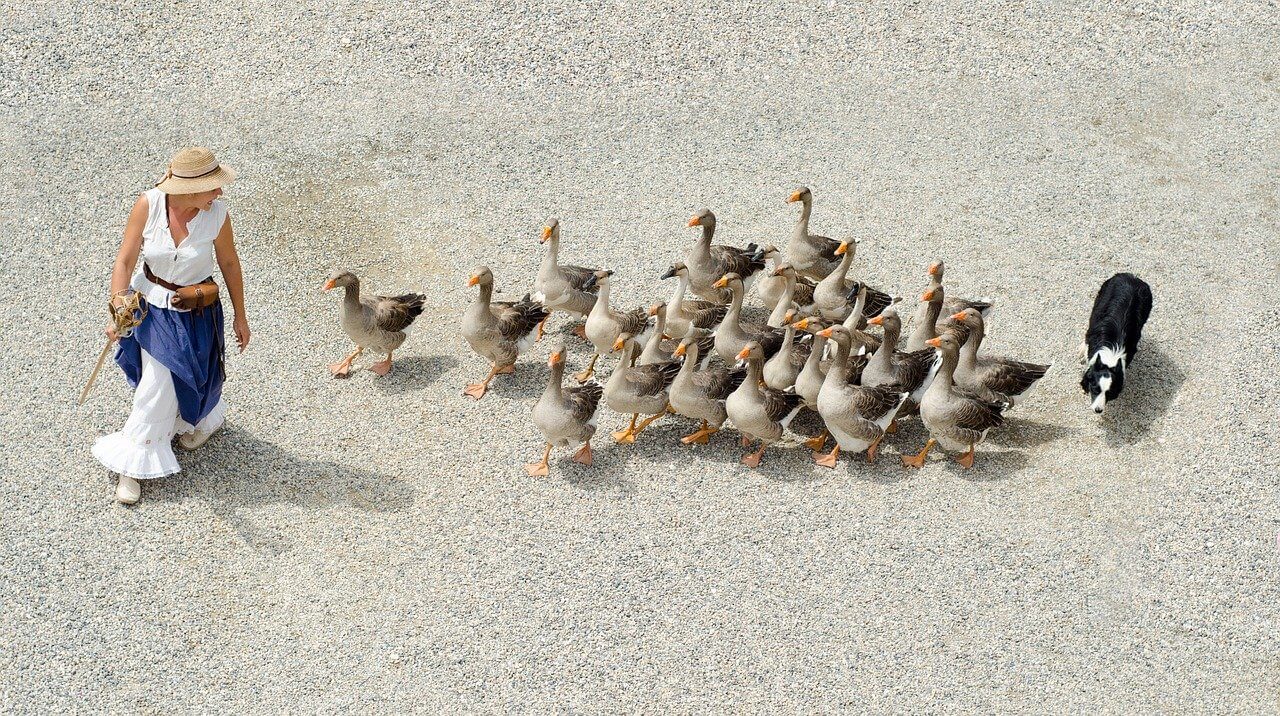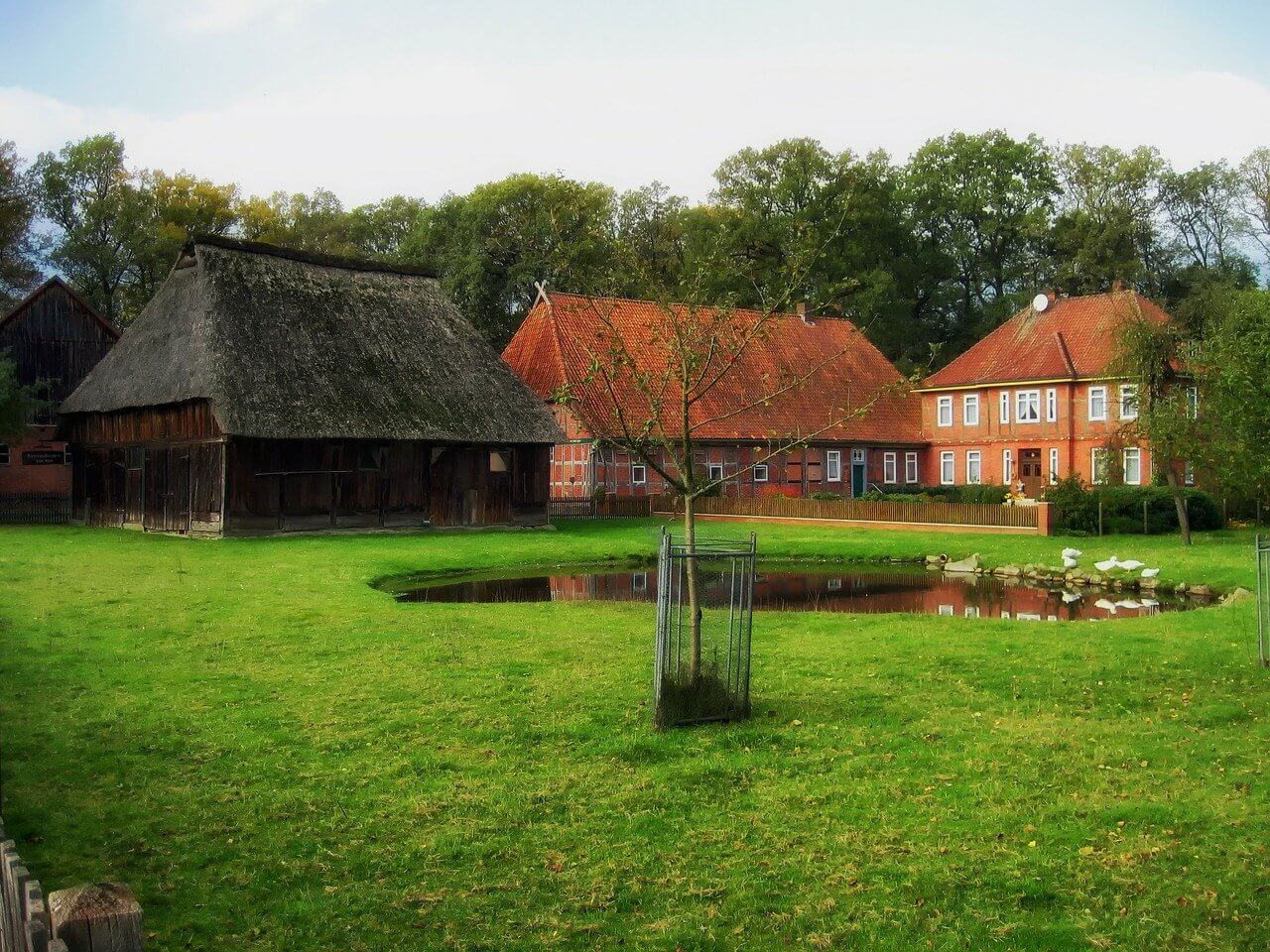An effective farm dog isn’t a pet, and yet he isn’t livestock either. Rather, he straddles the divide between family and animals. Knowing how to train a farm dog is crucial to having one. Having a well trained dog can be an important element of your farm security.
Keep reading to learn about raising a farm dog; what they do on farms; how to keep them in the yard; how to prevent them from roaming; and how to protect your livestock.
What You'll Learn Today
How To Raise A Farm Dog

Training a farm dog starts before he sets foot on the actual farm. You need a dog that instantly responds to basic commands. These include the following:
- Sit
- Stay
- Down
- Drop
- Come
- Leave it
Your farm dog’s introduction to the property needs to go slow. Walk him around on a leash, preferably without other animals present. Let him start absorbing it all, which is likely to excite him.
Once your dog gets comfortable after several visits, start introducing him to animals. Immediately train your dog for what specific actions are acceptable or not. Barking and chasing animals typically won’t be tolerated, unless you are looking for a herder.
The introduction of small animals should involve two people, one to control your dog and the other to handle the chicken or rabbit. Let your dog get used to the smell.
Introducing larger livestock is best done at first with a fence between the two animals. It helps if you have a cow, horse, or other animal already used to dogs. Again, several sessions may be necessary.
Set limits. Certain spaces need to be only for their assigned animals. You might also need to train your dog to avoid livestock dewormers, feed rooms, and hoof trimmings.
What Does A Dog Do On A Farm?

Farm dogs have many roles on the farm they work at, and they can be pretty much anything a dog can be trained to do. However, specific examples include:
- Protecting livestock from predators
- Helping find lost animals
- Herding sheep and cattle
- Controlling rats, mice, and other rodents
- Helping farmers with disabilities
- Protecting your farm against trespassers
The biggest thing a dog might do on a farm is save money. Dogs can serve roles that would otherwise need to be handled by people. A farm dog is never free, but he frees up payroll and stays loyal for life.
How Do You Train A Farm Dog To Stay In The Yard?

Getting a farm dog to stay in the yard where he needs to be is a matter of training. Even in a fenced area, you need to train your dog to not follow you inside or outside the yard area.
It all starts with training, which should happen daily until your dog is well-inclined to do as you wish. Follow these six steps:
1. Walking The Boundary
While still using a leash, walk your dog numerous times around the perimeter you want to establish. Use flags or finger pointing to let your dog know where the line is not to be crossed.
2. Wave The Boundary
After about a week, stop pointing out the perimeter and just use sweeping motions with one or both of your arms. Your dog should demonstrate some sense of where the boundary line is now and stay within it.
3. Practice Commands
In the third week, start practicing basic commands, especially ‘sit’, at different places on the borderline.
4. Stay Put
Once your dog masters ‘sit’, then start using the ‘stay’ command. You need to get to the point that you can cross the line and your dog will stay behind.
5. Leave It
Eventually, you need to be able to train your dog to leave alone anything across the line that might draw his interest. Your neighbors will thank you.
6. Treats
If your dog is truly committed to staying and leaving things on the other side of the line alone, you should be able to toss treats over the boundary and he won’t go after them. Just make sure you retrieve the treats or offer different ones.
If the Perimeter Method doesn’t work, you can also try other systems, such as the Boundary Training Method or Help From Friends Method. Whether or not doing more than one is useful is a hard call. They can be reinforcing, but also potentially confusing.
How To Keep A Farm Dog From Roaming
Other than boundary training, the only real answer here is physical fencing. Invisible fencing isn’t always ideal, since it won’t keep your livestock in, and it can still let in other dogs, predators, and even a stray vehicle that might run your dog over.
Invisible fencing is also prone to failures due to garage door openers and other electronics, and if your dog does get out, he might not want to come back in because of the shock.
How To Train A Dog To Protect Livestock

First off, try to find puppy litters from other farmers, especially from working parent dogs that are known to protect the same kind of livestock you hope to protect. The best livestock dogs spend time with their assigned animal at between 8 to 16 weeks of age, forming lifelong bonds.
While early exposure is crucial, make sure the dog is only with livestock members not big or strong enough to hurt him. A small and safe space with only a few members of the livestock species is a good place to start.
As the dog grows, introduce him to more members of the livestock species, but also start introducing him to particular commands as well as possible dangers. He needs to know how to protect himself before he can know to recognize dangers for the livestock.
Feed your dog the same time as the livestock, but also make sure he has his own safe space for eating so there is no competition for food.
Conclusion
A properly raised and trained farm dog can do quite a bit on the farm, but there’s far more to it than can be covered here. If you’d like to learn more, feel free to consult the following video used in researching this subject matter:
Farm dogs are no doubt the best companions of farmers!